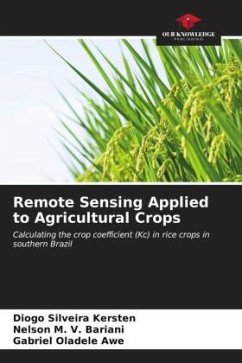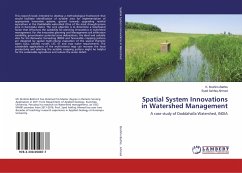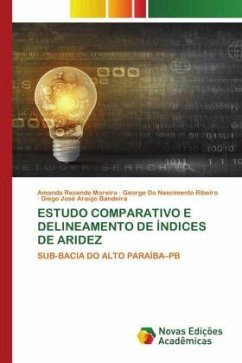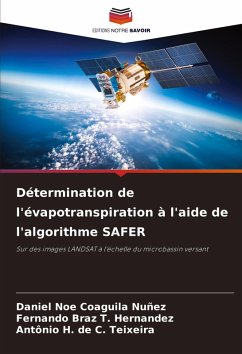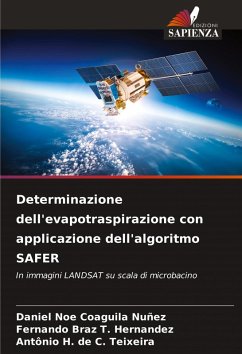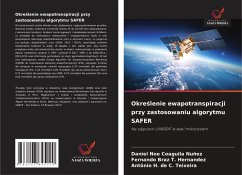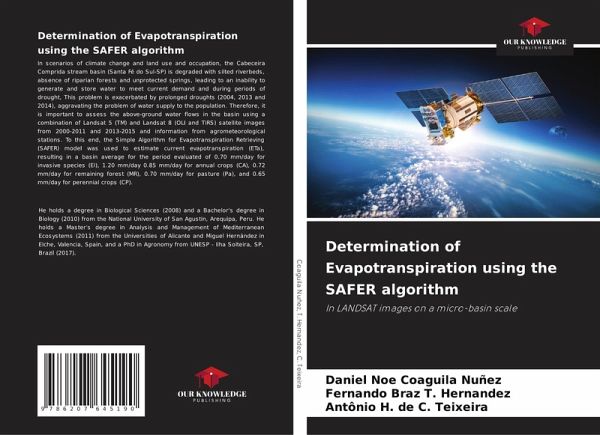
Determination of Evapotranspiration using the SAFER algorithm
In LANDSAT images on a micro-basin scale
Versandkostenfrei!
Versandfertig in 6-10 Tagen
37,99 €
inkl. MwSt.

PAYBACK Punkte
19 °P sammeln!
In scenarios of climate change and land use and occupation, the Cabeceira Comprida stream basin (Santa Fé do Sul-SP) is degraded with silted riverbeds, absence of riparian forests and unprotected springs, leading to an inability to generate and store water to meet current demand and during periods of drought, This problem is exacerbated by prolonged droughts (2004, 2013 and 2014), aggravating the problem of water supply to the population. Therefore, it is important to assess the above-ground water flows in the basin using a combination of Landsat 5 (TM) and Landsat 8 (OLI and TIRS) satellite ...
In scenarios of climate change and land use and occupation, the Cabeceira Comprida stream basin (Santa Fé do Sul-SP) is degraded with silted riverbeds, absence of riparian forests and unprotected springs, leading to an inability to generate and store water to meet current demand and during periods of drought, This problem is exacerbated by prolonged droughts (2004, 2013 and 2014), aggravating the problem of water supply to the population. Therefore, it is important to assess the above-ground water flows in the basin using a combination of Landsat 5 (TM) and Landsat 8 (OLI and TIRS) satellite images from 2000-2011 and 2013-2015 and information from agrometeorological stations. To this end, the Simple Algorithm for Evapotranspiration Retrieving (SAFER) model was used to estimate current evapotranspiration (ETa), resulting in a basin average for the period evaluated of 0.70 mm/day for invasive species (EI), 1.20 mm/day 0.85 mm/day for annual crops (CA), 0.72 mm/day for remaining forest (MR), 0.70 mm/day for pasture (Pa), and 0.65 mm/day for perennial crops (CP).





